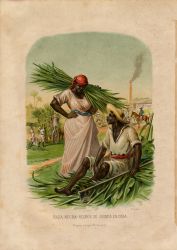The Colonial Era
Cuba's colonial period from the first encounters of the Spanish and Taíno cultures in the 15th century was a time for discovery and exploration. By the early 19th century, when Cuba and Puerto Rico were the only remaining colonies of the once rich Spanish empire, Cuba had developed a national identity and flourishing economy. Great thinkers, scientists, and philosophers of the time produced significant books and works of art illustrating the beauty of the island, the bounty of the country, and its strategic significance in the region.
The role of Spain in the governance of Cuba and the country's movement toward sovereignty and independence are among two of the most prevalent forces that shaped the history of Colonial Cuba. The Cuban Heritage Collection contains a sizeable number of books, periodicals, and archival materials that relate to the Colonial period.

















